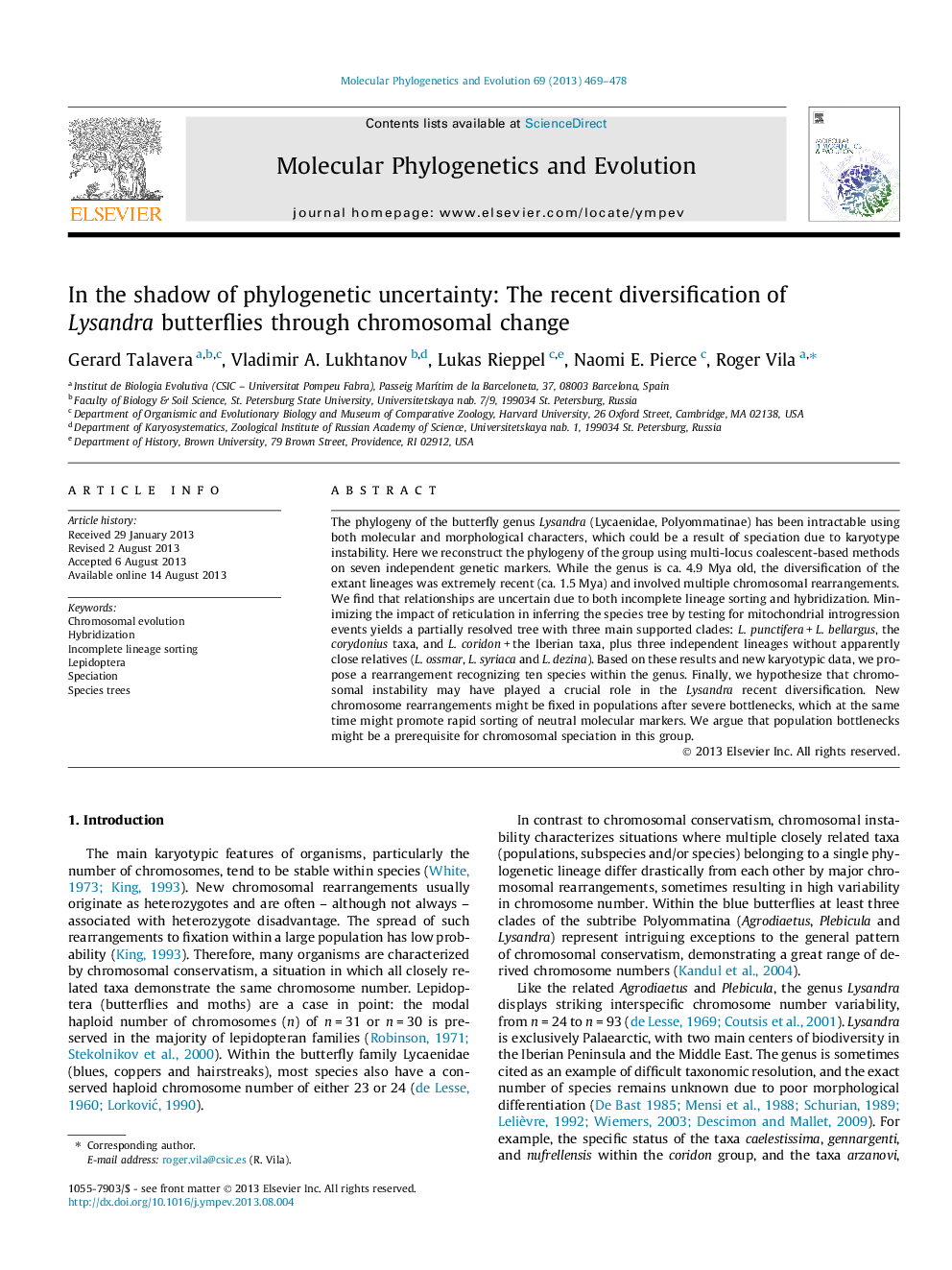| Article ID | Journal | Published Year | Pages | File Type |
|---|---|---|---|---|
| 5919630 | Molecular Phylogenetics and Evolution | 2013 | 10 Pages |
â¢Lysandra forms a clade displaying recent diversification that started around 1.4 Mya.â¢We revise the systematics and propose ten species divided in six genetic lineages.â¢Corydonius taxa represent a genetically and karyotypically homogeneous species.â¢Introgression is widespread in Lysandra and, if not addressed, can bias phylogeny.â¢Chromosomal instability originated three times and may have fostered diversification.
The phylogeny of the butterfly genus Lysandra (Lycaenidae, Polyommatinae) has been intractable using both molecular and morphological characters, which could be a result of speciation due to karyotype instability. Here we reconstruct the phylogeny of the group using multi-locus coalescent-based methods on seven independent genetic markers. While the genus is ca. 4.9 Mya old, the diversification of the extant lineages was extremely recent (ca. 1.5 Mya) and involved multiple chromosomal rearrangements. We find that relationships are uncertain due to both incomplete lineage sorting and hybridization. Minimizing the impact of reticulation in inferring the species tree by testing for mitochondrial introgression events yields a partially resolved tree with three main supported clades: L. punctifera + L. bellargus, the corydonius taxa, and L. coridon + the Iberian taxa, plus three independent lineages without apparently close relatives (L. ossmar, L. syriaca and L. dezina). Based on these results and new karyotypic data, we propose a rearrangement recognizing ten species within the genus. Finally, we hypothesize that chromosomal instability may have played a crucial role in the Lysandra recent diversification. New chromosome rearrangements might be fixed in populations after severe bottlenecks, which at the same time might promote rapid sorting of neutral molecular markers. We argue that population bottlenecks might be a prerequisite for chromosomal speciation in this group.
Graphical abstractDownload full-size image
